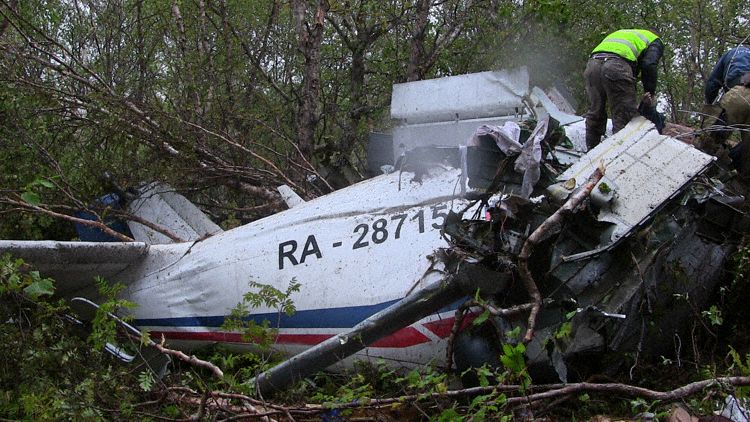An Antonov An-26 passenger aircraft, belonging to Kamchatka Aviation Enterprise, has been located at a crash site just over three kilometres away from Palana Airport, Russia, after failing to establish a scheduled communication nine kilometres away from the airport.
The 39 year old turboprop aircraft, registered RA-26085, was performing flight PTK-251 from Petropavlovsk-Kamchatsky to Palana with 22 passengers and six crew members on board. Among those on board was a child under the age of 12 and Olga Mokhireva, the Mayor of Palana.
Following the flights disappearance from radars, search efforts began with helicopters and boats working together to locate the wreckage. According to local media, a signal from the emergency locator beacon was picked up before an impact zone was identified on top of a sea cliff. Parts of the aircraft were then confirmed to have been found on land and in the water, in close proximity to the primary crash site. No survivors were found.
The Federal Air Transport Agency, or Rosaviatsiya, reported that the mountains around Palana were surrounded in clouds with a broken ceiling at 1000 feet MSL and overcast at 2400 feet at the time of the accident. Other reports have added that fog was present in the area and had hindered search efforts.
Approach into Palana Airport’s runway 12 requires sufficient visibility to clear the high set sea cliffs, before a turn is to be commenced to line up with the runway. Early information suggests that the aircraft had difficulty performing the approach due to the weather, however an investigation will have to be performed to determine the full cause of the accident.
The regional transport ministry and the company operating the aircraft said that the aircraft had passed all safety checks and was fit to fly.
More information will be added once available.
Similar Accident
In 2012 a similar accident occurred when an Antonov An-28 crashed 10km southwest of Palana Airport. 10 occupants died, with four others sustaining serious injuries. An investigation into the accident later determined that the pilots were unable to function properly due to alcohol in their system. Consequently, the dangerously low altitude reported by the radio altimeter was ignored. Whilst the investigation concluded that the pilots were at fault, the presence of a ground proximity warning system (GPWS) could have aurally alerted them to a point of some return; this would have been of particular benefit as the weather was preventing consistent visuals with the terrain below.

Cover photo by Igor Dvurekov




